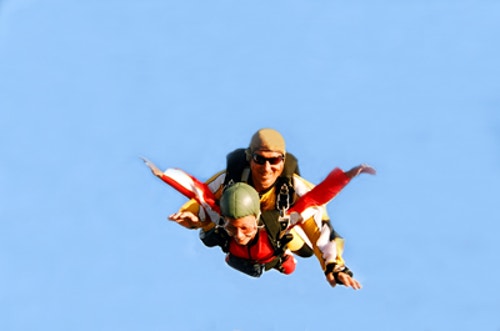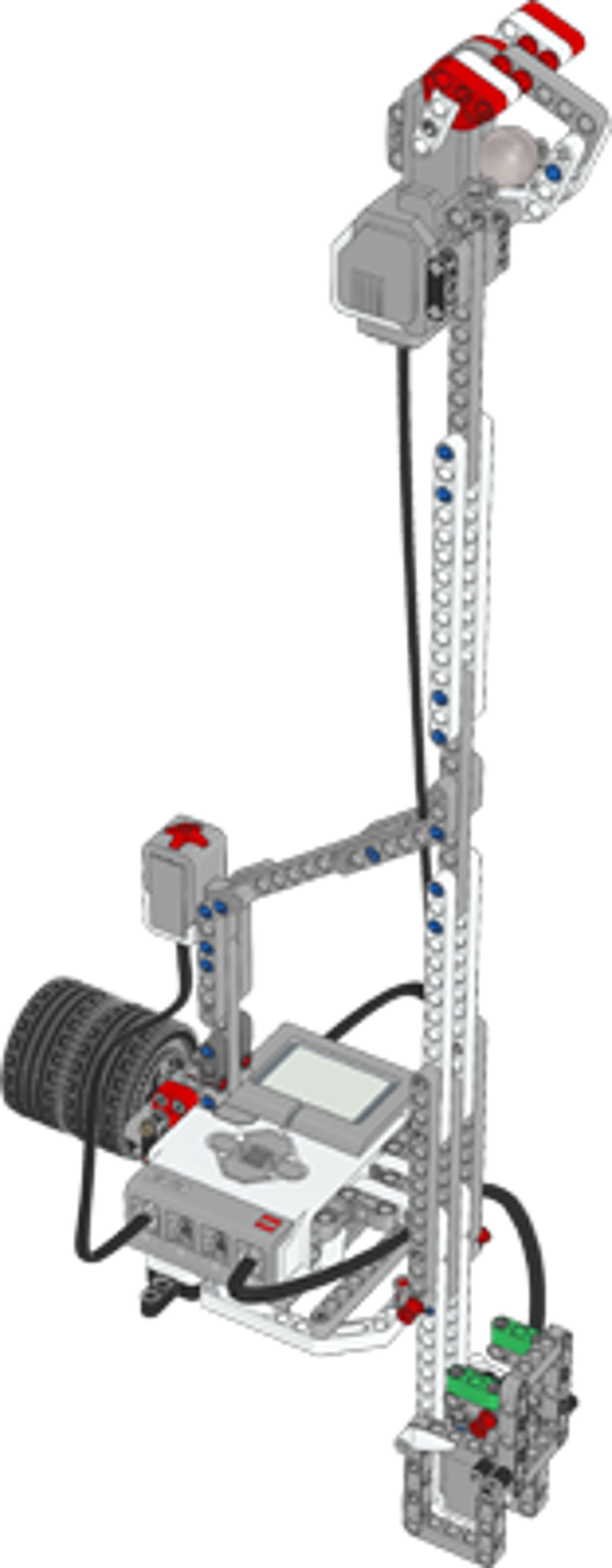Acceleration of Gravity
The Free Fall learning module highlights the time-distance equation when an object is accelerating.

Connect
(5 minutes)

Free fall describes a state in which objects like rocks, coins, or falling fruit fall to earth, due to gravity.
Interesting considerations here include:
the distance traveled by an object in free fall,
for how long an object falls before it hits the ground,
the velocity at which an object falls, and
how quickly an object accelerates.
The following experiment involves the construction of a drop tower equipped with suitable sensors for observing gravitational phenomena affecting a steel ball in free fall.
Notes on Preliminary Considerations
Explain why it is hazardous to sit under a tree full of ripe apples.
Apples may drop to the ground, and it is impossible to react quickly enough to get out of the way.
Explain why a person jumping out of an airplane at a great height needs a parachute.
Because they would fall too quickly otherwise and be crushed upon impact.
List everyday occurrences in which gravity plays a role.
Everything that falls, running water, moving/running over the Earth’s surface, etc
Construct
(20 minutes)
Construction Notes
Make sure that the students construct the drop tower correctly and also correctly download the provided program.

Download Program “10”
Contemplate
(20 Minutes)
Notes on Using the Model
The Touch Sensor is mounted to the back of the drop tower. It is used to trigger a drop experiment.
The Grasping Gripper closes automatically for the next experiment.
The Display on the EV3 Brick shows the fall time.
- Ensure that the model has been built correctly.
- Place the model properly on a solid and level surface.
- Ensure that the tower is not shaking when releasing the ball.
- The Touch Sensor can also be held and used as a manual remote control if needed. This allows you to avoid shaking the tower, which might lead to invalid tests.

Experiment – Measure
- Start Program “10”
- Place the ball in the closed Grasping Gripper.
- Start a test using the free Touch Sensor on the drop tower.
This is what happens:
The ball drops down onto the Touch Sensor at the bottom of the drop tower.
The fall time is indicated on the display.
The Grasping Gripper closes, and now you can repeat the experiment.
Invalid tests result in a Grumpy Face.
Perform the experiment at least three times.
Record the experiment numbers and fall times in the table. Expand the table if needed.
Make sure that the students carry out the experiment multiple times and enter their results in the table provided.
Let the students know that their recorded measurement results will be used in subsequent assignments.
Continue
(15 Minutes)
Analyze
You know the drop distance d and fall times t.
- Using the measured fall times, calculate the average velocity v of the falling ball.
- Enter the results in the table.
As a reminder: v = d/t.
According to the law of falling bodies: d = 0.5 * g * t².
g is a natural constant denoting gravitational acceleration. - Solve the equation of the law of falling bodies for g.
- Calculate the acceleration of gravity (g) based on the measured values from your experiments.
- Enter the calculated values for g in the table.
Encourage the students to perform additional calculations using the measured values.
The calculated velocity is the average velocity and not the impact velocity.
Different measured values result in different values for the acceleration of gravity. Advise the students about potential measurement errors.
Advise the students that the established value for the acceleration of gravity on Earth assumes free fall in a perfect vacuum.
Review
Briefly summarize the results of your experiment. Report on what you learned.
- Background and question (topic)
- Answers (make connections)
- Conclusions
- How it ties into everyday life (where do we see or use what we observed in everyday life?)
Teacher Support
The students know
How to determine the gravitational constant
There are laws of gravitation that apply to all objects
The students are able to
Log measured values
Analyze measured values
Interpret results
Understand relationships between the materials used and their impact on the results
Skills related to the experiment
How to use the LEGO Touch Sensor
Derivation of free fall acceleration from the experiments
LEGO® MINDSTORMS Education EV3 Core Set
LEGO® MINDSTORMS Education EV3 Lab or EV3 Programming
A tape measure as needed




